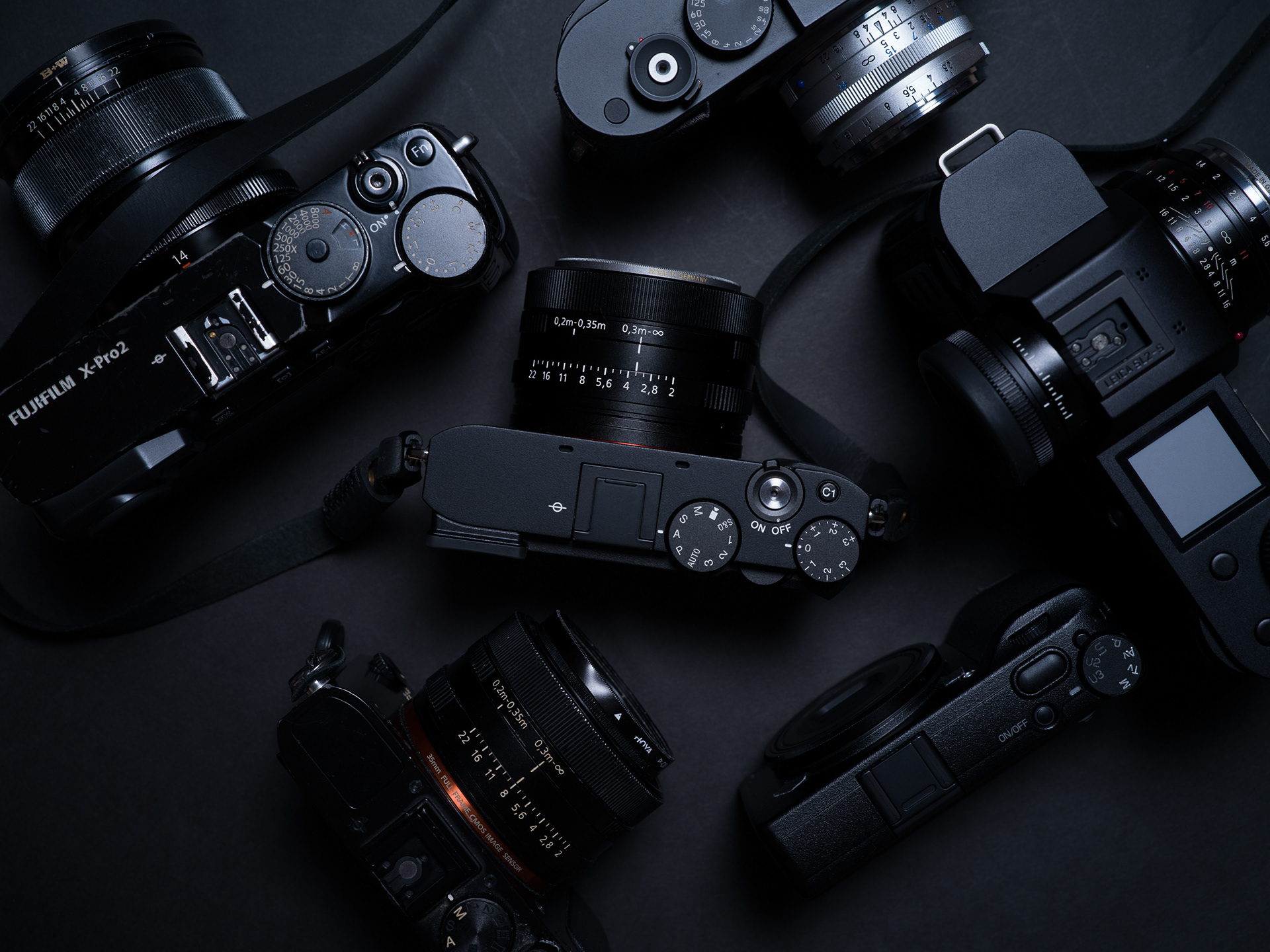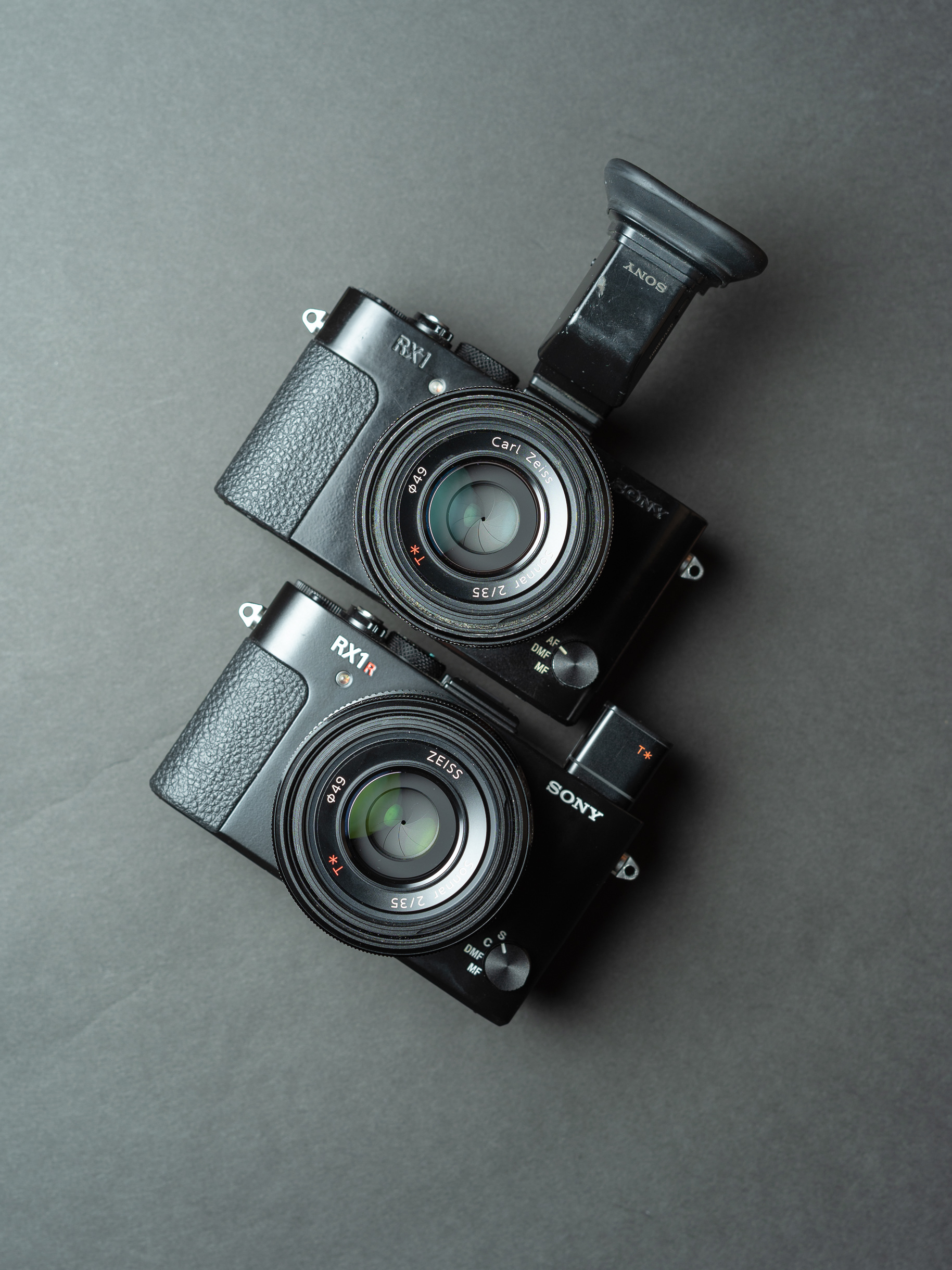
Sony RX1R III
An early review of the highly un-anticipated Sony RX1R III, based on influencer reactions, user expectations, the legacy of its predecessors, and of course personal real world use.
Why should one read and listen to this random no one on the interwebs? Actually a completely fair question, I wouldn't listen to me either.
But I would take it as another reference point, albeit from one who has owned the original RX1 for 13 years now (with constant use) and has also spent significant time with the RX1R II.
Sony RX1 (c2012)
It's one of favourite cameras of all time.
Here's a link to my original review of the Sony RX1, written over 10 years ago. I called it then an epiphany, and a camera that changed my whole outlook to photography. Actually much of what I wrote for the original camera is still highly relevant in 2025 for the RX1R III.
I will never sell it. In fact I sold the RX1R II instead.
Sony RX1R II (c2015)
I gave up waiting for a successor to the RX1 lines. 13 years after the RX1 and 10 years after the RX1R II many were hopefully but pretty much resigned to the reality of no more innovative small cameras from Sony. By 2024, my RX1 was showing it's age and although I dearly loved that camera (as much as one could love an inanimate object), I knew it was time to retire the RX1 and look for a modern counterpart.
I tried and tested many, Ricoh GRIII, Fujifilm X100VI (my first one, I skipped over the first 5 generations), Sony A7CR, Leica Q343 and of course the Sony RX1R II.
The Q343 was lovely but not sufficiently different from the M11 and X-Pro2 form factor, the Sony A7CR is not fun, especially with the current lens selection and whilst I have the GRIII, the X100VI will go with the arrival of the RX1R III, but what of the RX1R II? It's also gone.

Sony RX1R III: An Early Impression
The Sony RX1 series has long held a mythical status in the photography world. It’s the uncompromising full-frame compact, a fusion of minimalist design and maximum image quality. The RX1R II, released in 2015, has been a cult classic for nearly a decade, leaving fans desperately wondering if a successor would ever arrive.
While Sony has remained officially silent, based on the industry's trajectory and the clear gaps in the previous model, we can construct a compelling picture of what an RX1R III would need to be. Here’s our early, wishlist-driven review.
The Good:
· Unchanged, Perfect Form Factor: The core appeal remains. It’s a full-frame sensor nestled in a body barely larger than a premium point-and-shoot. The solid magnesium alloy build, subtle grip, and classic control dials are all present. It still feels like a jewel in the hand, a discreet tool for the purist.
· The New 60MP BSI CMOS Sensor: This is the headline upgrade. The RX1R III would almost certainly inherit the stunning high-resolution sensor from the a7R V. The detail resolution is simply breathtaking. For landscape, architectural, and studio photographers, the ability to crop aggressively or print monumentally is a game-changer, all from a camera that fits in a jacket pocket.
· Modern Processing, Blazing Speed: Gone are the somewhat sluggish menus and operational delays of the Mark II. The new Bionz XR processor brings the same responsive performance found in the a1 and a7 IV. The startup time is near-instantaneous, the autofocus is lightning fast, and the menu system is the vastly improved new version. The blackout-free shooting experience makes it feel like a true modern camera.
· Revolutionary Autofocus: This is the most significant quality-of-life upgrade. We’re predicting the inclusion of Sony's latest Real-time Tracking and Eye AF (for human, animal, and bird). The days of the RX1R II's hesitant AF are over. The III would lock focus onto a subject's eye with terrifying speed and tenacity, making it capable for street photography and casual portraits in a way its predecessor never was.
· 5-Axis In-Body Image Stabilization (IBIS): A first for the series. This addresses the biggest criticism of the older models: the need for high shutter speeds due to the high-resolution sensor. Gaining 5+ stops of stabilization makes handheld low-light shooting with the fixed 35mm f/2 lens not just possible, but practical.
The Not-So-Good:
· The Price of Exclusivity: Expect a stratospheric price tag. We’d speculate a launch price of $4,300 - $4,500 USD. This places it in a niche of its own, far beyond even the most premium mirrorless kits. You are paying for the engineering marvel of miniaturization.
· Battery Life Still a Compromise: While it would likely use the larger NP-FZ100 battery, the small body design inherently limits capacity. You’ll still be carrying spares for a full day of heavy shooting. It’s the necessary trade-off for the size.
· 4K/60p, but No 8K: It will shoot beautiful 4K video from the full width of the sensor with 10-bit color and S-Log3, making it a potent filmmaker's tool. However, it likely won't feature 8K, as the thermal management in such a small body would be immensely challenging. It's a photographer's camera first.
· The Lens Question: The Zeiss Sonnar 35mm f/2 is legendary for its character and sharpness. However, some will inevitably wish for a wider aperture (e.g., f/1.8 or f/1.4) or a different focal length (e.g., a 50mm version). The fixed lens is both its greatest strength and its most limiting factor.
Early Verdict:
The hypothetical Sony RX1R III wouldn't be a camera for everyone. It's an ultra-specialized tool for the discerning photographer who prioritizes image quality above all else and values absolute discretion.
It takes the beloved, classic concept of the RX1 and injects it with modern performance, making it finally feel complete. The addition of a high-resolution sensor, class-leading autofocus, and crucial IBIS transforms it from a quirky masterpiece into a genuinely reliable and breathtakingly powerful everyday camera.
Who It's For: The professional seeking a "always with me" camera that doesn't compromise on IQ; the wealthy enthusiast who values design and engineering; the street and travel photographer who needs the best possible image quality in the smallest possible package.
Who It's Not For: Anyone on a budget; videographers who need pro-level video features; photographers who require the flexibility of interchangeable lenses.
If Sony ever announces this camera, it will be a statement piece: proof that in an age of convergence, there is still a place for a radical, no-compromise, and utterly brilliant dedicated photographic instrument.

Hiking Hong Kong, Sony RX1R III

Hiking Hong Kong, Sony RX1R III

Hiking Hong Kong, Sony RX1R III

Hiking Hong Kong, Sony RX1R III

Hiking Hong Kong, Sony RX1R III

Hiking Hong Kong, Sony RX1R III

Hong Kong Water Taxi, Sony RX1R III

Hong Kong Water Taxi, Sony RX1R III

Hong Kong Streets, Sony RX1R III

Hong Kong Streets, Sony RX1R III

Hong Kong Streets, Sony RX1R III

Hong Kong Streets, Sony RX1R III

Hong Kong Streets, Sony RX1R III

Hong Kong Streets, Sony RX1R III

Hong Kong Streets, Sony RX1R III

Hong Kong Streets, Sony RX1R III

Hong Kong Streets, Sony RX1R III

Hong Kong Streets, Sony RX1R III

Hong Kong Streets, Sony RX1R III

Hong Kong Streets, Sony RX1R III

Hong Kong Streets, Sony RX1R III

Hong Kong Streets, Sony RX1R III

Hong Kong Streets, Sony RX1R III

Hong Kong Streets, Sony RX1R III

Hong Kong Streets, Sony RX1R III

Nice food, Hong Kong, Sony RX1R III

Nice food, Hong Kong, Sony RX1R III

Hong Kong Streets, Sony RX1R III

Hong Kong Streets, Sony RX1R III

Hong Kong Streets, Sony RX1R III

Hong Kong Streets, Sony RX1R III

Hong Kong Streets, Sony RX1R III

Hong Kong Streets, Sony RX1R III
